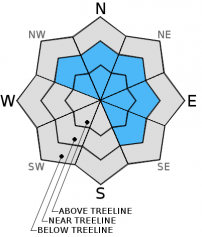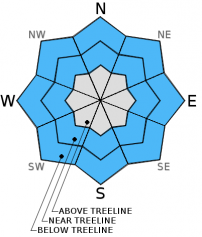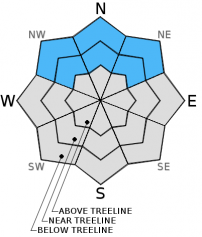| Monday | Monday Night | Tuesday | |
|---|---|---|---|
| Weather: | Snow decreasing to isolated showers by 8 am. Skies becoming mostly to partly cloudy by the afternoon | Mostly cloudy | Mostly cloudy to partly sunny |
| Temperatures: | 32 to 38 deg. F. | 23 to 29 deg. F. | 35 to 43 deg. F. |
| Mid Slope Winds: | West | Variable | Southwest |
| Wind Speed: | 10 to 15 mph | Light | 10 to 15 mph with gusts to 25 mph |
| Expected snowfall: | up to 2 | 0 | 0 |
| Monday | Monday Night | Tuesday | |
|---|---|---|---|
| Weather: | Snow decreasing to isolated showers by 8 am. Skies becoming mostly to partly cloudy by the afternoon | Mostly cloudy | Mostly cloudy to partly sunny |
| Temperatures: | 28 to 34 deg. F. | 22 to 27 deg. F. | 30 to 38 deg. F. |
| Ridge Top Winds: | West | West | West |
| Wind Speed: | 15 to 25 mph with gusts to 40 mph | 15 to 20 mph with gusts to 30 mph | 15 to 25 with gusts to 40 mph |
| Expected snowfall: | up to 2 | 0 | 0 |



























